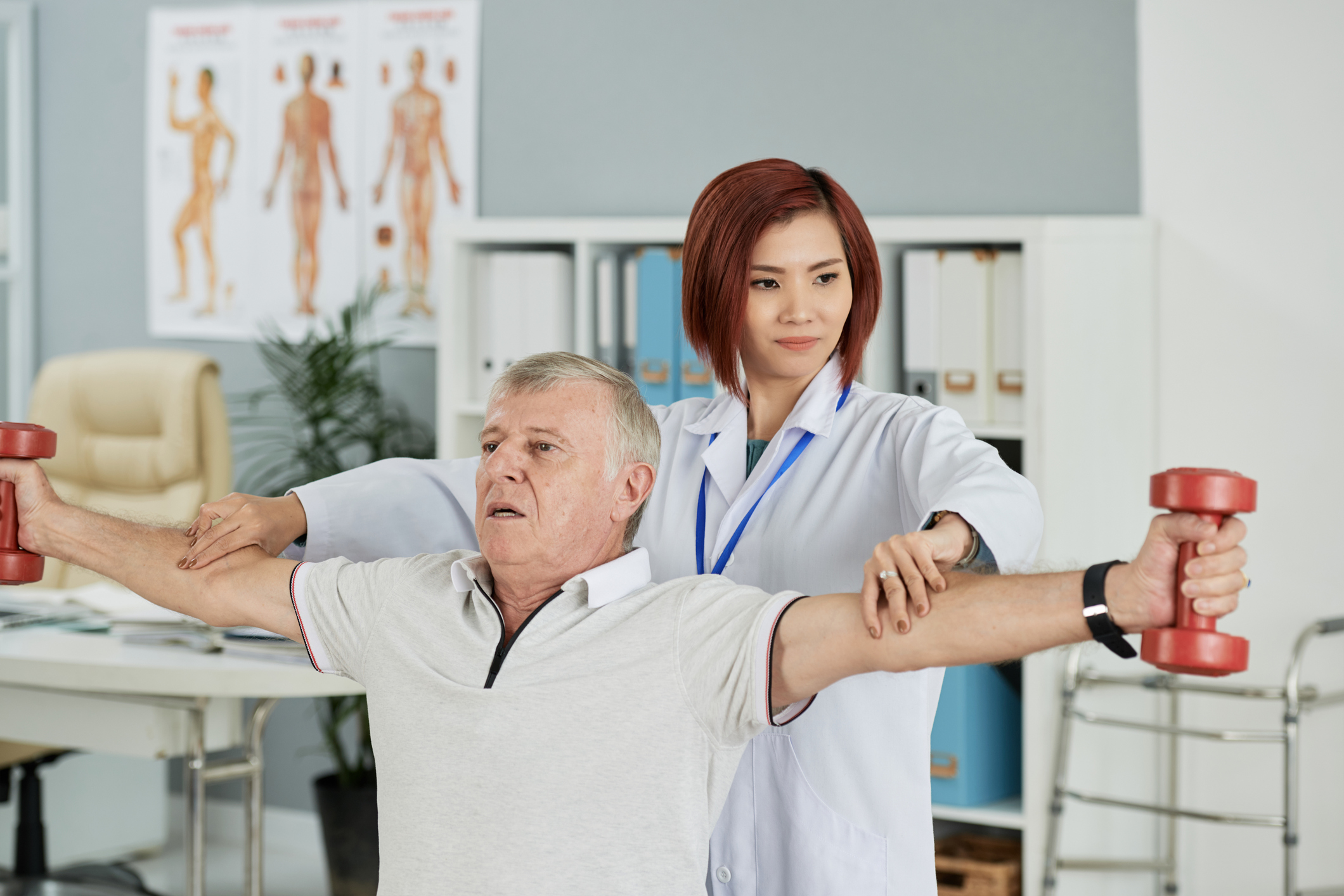Recovering physical function after a fall resulting in injury or following a stroke can mean the difference between continuing to live independently or hastening a move into assisted living for many older adults.
With good rehabilitation, there is the possibility of returning to a “normal” and as independent life as possible. And new research is demonstrating the surprising benefits of exercising muscles on one side of the body to benefit the other, even if the opposite side is compromised by a break or other weakness.
May marks National Stroke Awareness Month and many of the efforts of this awareness campaign are directed at recognizing the signs of a stroke and risk factors for stroke. But with more resources about recovery following stroke, survivors can live their best possible life. According to the Centers for Disease Control and Prevention, someone in the United States suffers a stroke every 40 seconds and stroke is the leading cause of serious, long-term disability. Nearly 3/4 of all strokes occur among adults over the age of 65.
According to a May 16 report in the New York Times, a Canadian study, published in the Journal Of Applied Physiology, found that by exercising the muscles on one side of the body, an immobilized arm or leg on the other side can be strengthened. The muscles on the opposite corresponding limb will contract during exercise; this mirroring effect can help prevent atrophy and strengthen muscles not being used by up to 20 per cent. These findings could make a significant difference in the starting point from which recovery of function begins after a stroke or injury.
Researchers also believe that in addition to mirroring, changes in the nervous system during exercise on one side of the body may reach the same part of the body on the other side. It is thought that biochemical substances released by working muscles may somehow reach the corresponding opposite muscles, helping to preserve strength. Continued study is planned to discover more about how cross education can preserve the strength and muscle size of immobilized limbs. In the meantime, it certainly wouldn’t hurt to strengthen the muscles opposite the side of the body that is injured or disabled. Talk with a doctor or your physical therapist to learn more.






Add Your Voice
0 Comments
Join the Discussion